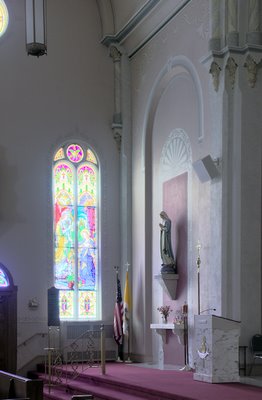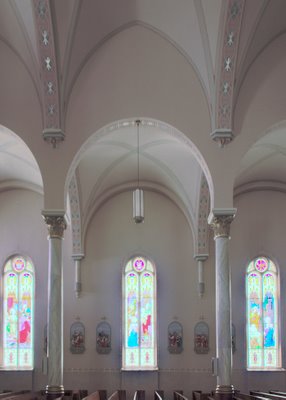Reuters' Beriut smoke enhancement
Condoleezza Rice demon eyes photo
Katie Couric made slimmer
This is referred to as the "Photoshop scandal", after the popular photo editing software Adobe Photoshop, although there are many other vendors of computer photo software capable of doing similar alterations.
Image alternation is nothing new, with the Soviets notoriously known for retouching photos to eliminate politically incorrect persons. And beyond photography, even Jacques-Louis David gave up painting a giant portrait of the French revolutionaries because of too many required changes: his subjects were getting executed.
Fashion and glamour photography, and especially magazine covers, use Photoshop retouching extensively, so much so that the final result is artful, but also a mere fantasy. See this site for examples (this contains some rather shocking touch ups, though; beware). Retouched glamour photos like these may raise the expectations of young viewers to the point that they may find real people, including themselves, disappointing and undesirable.
The use of Photoshop or its competitors is, indeed, a moral act.
While I use Photoshop Elements for editing my photos for Rome of the West, it is my policy to avoid retouching photos as much as possible: typically, I do eliminate camera artifacts, such as hot pixels that appear as bright points on the photo.
My concern, though, is with reproducing what I actually see. It is highly disappointing that the camera doesn't record what I see very well, so it takes some work to make a photo representative of real life. But I do have one exception to this realism rule: if the lighting of a room is dim and yellowed, I will correct the white balance of the scene, so that the colors will reproduce as if they were illuminated by bright, white lights. This makes colors pop out, although to the eye they might appear dim and ugly. I also correct for camera tilt and lens distortion, to make things that are vertical, look vertical; the eye automatically corrects for this, while the camera does not.
A big problem is the lack of significant dynamic range in the photograph, that is, the ratio of the amount of light needed to produce pure white versus pure black in the final photo. With standard digital photos, the ratio is less than 300 to 1, and that isn't much. Go outside on a sunny day, and your eye will be able to pick out detail simultaneously in both highlights and shadows, with luminous ranges of tens of thousands to one.
When inside of a church, I can either photograph the nave acceptably, but the stained glass windows will be white; or I can photograph the windows, while the nave will be black. But I can see both with my eyes, so it is frustrating that the camera is so limited.
Professionals use massive amounts of supplemental lighting to produce a uniformly-illuminated subject.
However, there is a relatively new technique, called High Dynamic Range Imaging, which uses tricky camera techniques and special computer software to generate images with enormous luminous ranges. The technique came out of academia in 1997, and has gained popular acceptance as well as commercial software support.
For examples of this technique in action, please see:
(note, some images may not be suitable for all viewers)
Flickr: TTHDR (True Tone High Dynamic Range)
Flickr: HDR
Most of these photos are quite stunning. Some look hyper realistic: more real than real, while others look like paintings. Others look fake or unreal. Of course, the art of painting has, for millennia, used a kind of High Dynamic Range technique to allow both bright light and dark shadow to be represented on the same canvas, so why not photography?
Ansel Adams used this technique extensively in the old pre-digital days, and his photos often look better than the real thing.
I am interested in hearing comments about those Flickr photos linked above. Are they good, bad, or interesting? In your opinion, are the results of this technique still experimental, needing extra development, or are they ready for the mainstream?
Here are my first rather pathetic attempts at the technique. Photos taken at Saints Peter and Paul church in Waterloo, Illinois, of the Diocese of Belleville.




I'm gratified that the Flickr groups have a number of photos of churches, including shots that show both the interiors and the stained glass windows with excellent detail.
ReplyDelete